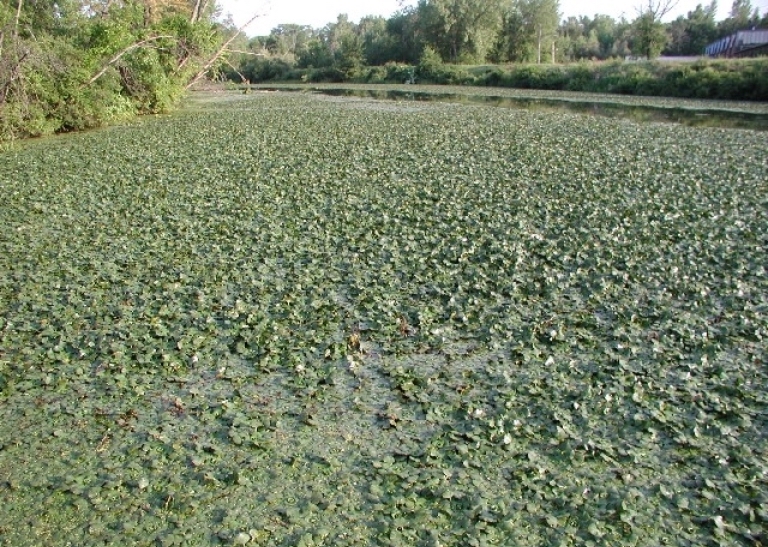Aquatic Plant Harvesting: Casey Lake Minnesota Study Site
PowerPoint presentation on aquatic plant harvesting on Casey Lake in Minnesota (pictures included).
Aquatic Plant HarvestingPhosphorus Removal (PowerPoint Presentation)
The mechanical harvesting of nuisance macrophytes in shallow lakes is frequently conducted to improve recreational opportunities and aesthetics. This management approach also removes phosphorus from lake systems. We i assessed the effectiveness and relative cost of phosphorus removal by plant harvesting in a shallow (mean depth 0.6 m), small (5-ha), urban lake in Minnesota from which common i carp (Cyprinus carpio L.) had previously been eradicated by { drawdown. In 2014, two harvesting efforts (July and August) ! were effective at reducing infestations of water net [Hydro- j dictyan reticulatum (L.) Bory] and common elodea {Elodea canadensis Michx.) in Casey Lake. A total of 3,600 kg dry weight of plant material and 16.4 kg of total phosphorus (TP) were removed through harvesting. The phosphorus removed by harvesting was equivalent to 53% of the TP I inflow (load) to Casey Lake. The cost of this phosphorus I removal was $670 kg“^ of TP, which was more expensive 5 than in-lake alum treatment ($480 kg ’ of TP), but considerably less expensive than many watershed bestmanagement practices ($2,800 to $49,800 kg~^ of TP). Phosphorus removal costs were figured over the life of each practice. Our results show that macrophyte harvesting can be a cost-effective means to remove phosphorus from an urban shallow lake system, and this management tool has the potential to factor into dynamic and creative lake and watershed management plans.
Key Points
- Total P removed from Casey Lake at 53%
- Cost of Harvesting was $11K over 66 hours or roughly $167 per hour of labor costs
- Urban watersheds do not have enough land to collect nutrients limiting the efficacy of watershed management as a tool in cities.
- Repeated Treatments are needed to remove additional TP from system
Key Points
- Removal of Macrophytes changes system to Phytoplankton dominated lake:
- This didn’t happen in Casey lake* (carp removal?)
- Lower culng depth recommended to reduce number of future culngs
- Larger Scale Aquamarine Corp harvesting firm in Canada
Conclusions
- Study Slows Aquatic Harvesting accomplishes simultaneous management goals of TP nutrient removal and improved ecosystem
- Cost for TP with harvesting is substantially less than watershed management
- Urban Lakes with small watershed are unable to utilize land-based BMPs (Best Management Practices




